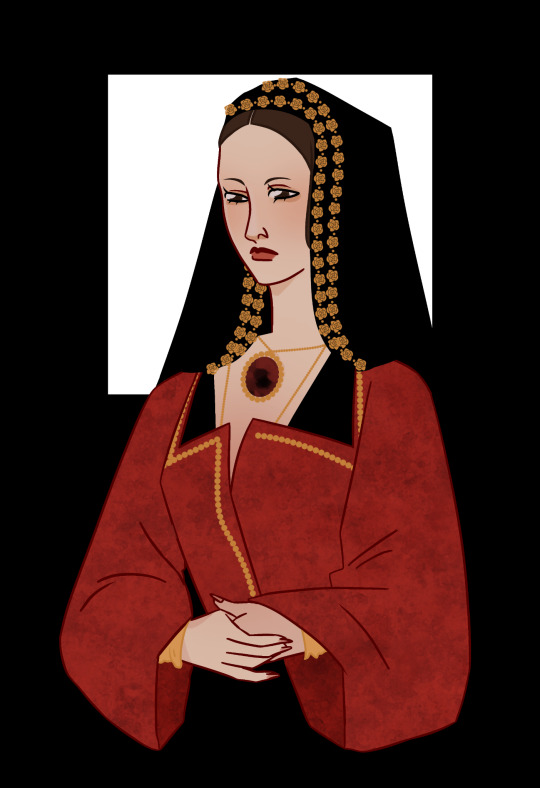Text
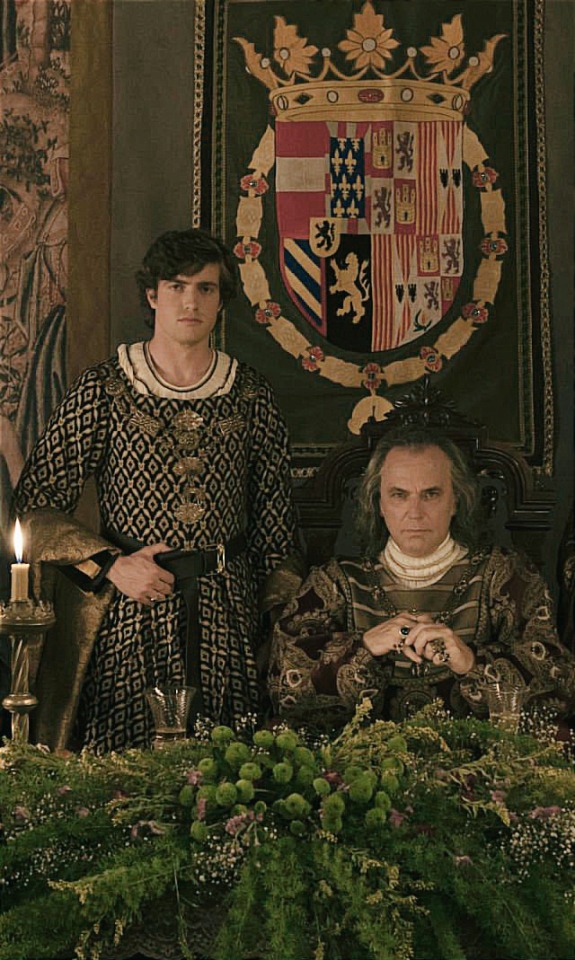

La Corona Partida 2016
Raúl Mérida as Philip The Handsome
José Coronado as Emperor Maximilian I
Irene Escolar as Juana of Castile
Úrsula Corberó as Margaret of Austria
#juana de castilla#juana of castile#philip the handsome#maximilian I#margaret of austria#la corona partida#irene escolar#raul merida#josé coronado#ursula corbero
3 notes
·
View notes
Text
Thread about Joanna of Castile: Part 8.1: "A Tumultuous Dilemma: Juana's Struggle Between Love and Duties"
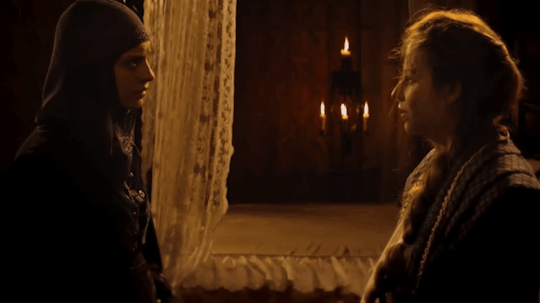


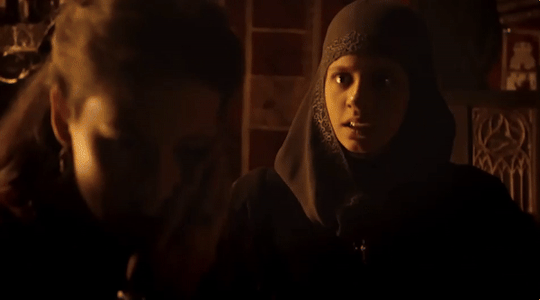
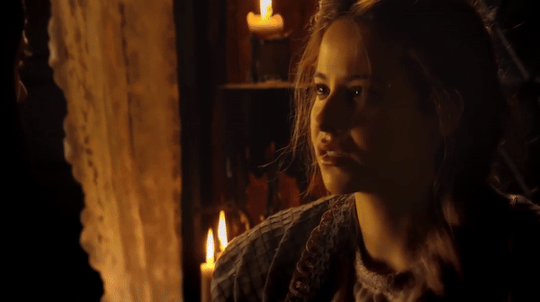
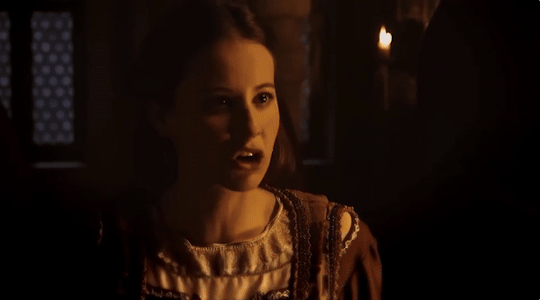


Torn, nonetheless, between mother and husband, old frustrations and resentments erupted. She feared that Isabel planned, in Padilla’s word, to descasar (‘unmarry’) her. The news that Philip, always susceptible to fever, had fallen seriously ill at Lyon would have put her in a state of deep concern. It can be no mere coincidence that, just as Louis’ doctors were despairing of Philip’s recovery, Isabel’s doctors were concluding that relations between mother and daughter had become so bad that they had to be separated.
Even if Juana did not fully realise the seriousness of Philip’s illness, her instinct would have been to rush to his side, and she may have reminded Isabel of the monarchs’ remark of 1500:
“Do not think that you are coming here never to return. Rather, you can come and go as you wish after being sworn-in.”


However, the seas were beginning to build, and Juana was unable to travel through France while hostilities continued. Above all, Isabel’s own health was deteriorating. She attempted to conceal Philips eventual arrival home from Juana “because, in truth, she did not want her daughter to return to Flanders, since she felt very unwell with the illness from which she died.”
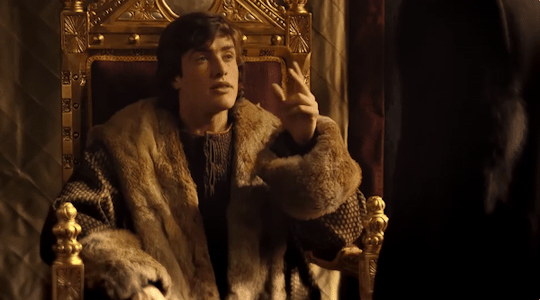



Philip, upon his recovery, maintained the pressure for Juana's return by dispatching a series of messengers and letters. In August, Juana assured him that preparations for her departure were under way; that she and Isabel were heading for Burgos and that Ferdinand was well. In the event, Isabel stayed at Segovia while Juana, proceeding north, stayed in the stronghold of La Mota at Medina del Campo.
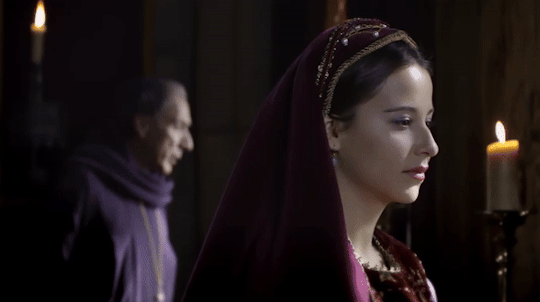


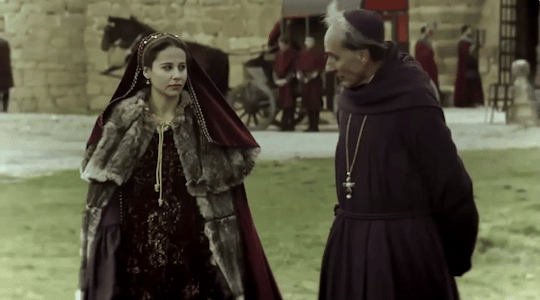


Her residence in the fortress remains something of a mystery. From its hill, the red brick castle, with its massive quadrilinear keep and bartizan towers, was Castile's arsenal as well as archive and occasional lodging place and prison, and it still has a prison. The most likely explanation for Juana's stay is that Isabel had decided that she could be better guarded at La Mota than at the royal palace, since trust was failing on both sides.


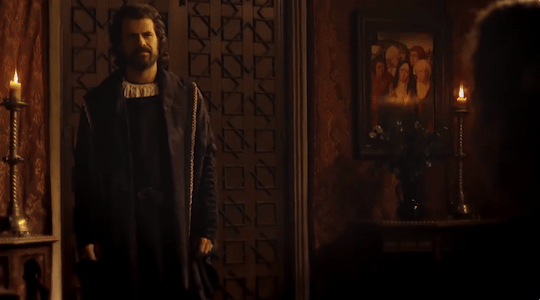
On 6 September, a ship’s captain told Fernando that he had received an order from Juana to await her at Bilbao. A dismayed Isabel wrote:
“I do not think, or expect, and so cannot believe you are leaving, for although there are many necessary reasons for your departure, greater problems may follow if you leave like this.”


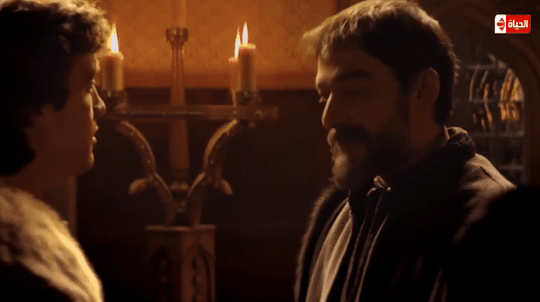



Juana complied. She was, however, beginning to feel pressure from Philip, who used four-year-old Charles to send an emotional appeal. Juana’s last reserves of self-control broke down.
Sources: Fleming, G. B. (2018). Juana I: Legitimacy and Conflict in Sixteenth-Century Castile (1st ed. 2018 edition). Palgrave Macmillan.
Fox, J. (2012). Sister Queens: The Noble, Tragic Lives of Katherine of Aragon and Juana, Queen of Castile. Ballantine Books.
Gómez, M. A., Juan-Navarro, S., & Zatlin, P. (2008). Juana of Castile: History and Myth of the Mad Queen. Associated University Presse.
#joanna of castile#juana i of castile#philip the handsome#irene escolar#raul merida#juana de castill
5 notes
·
View notes
Text
Thread about Joanna of Castile: Part: 10.1.1. :“A Turbulent Marriage: Violent Scenes and Unresolved Tensions between Joanna and Philip”

Mojica had visited Castile in July 1504 to inform Isabella and Ferdinand of the grave things that had happened since the Princess returned, and which the ambassador had not written about in his letters because they were very delicate and secret. Although Philip had behaved well, Joanna was not interested in seeing or talking to the Spanish ambassadors any more.
In August, the monarchs contacted them by writing, expressing their dissatisfaction with the lack of affection between their daughter and son-in-law.
The following are some of the violent incidents that transpired between the spouses, which were subsequently recollected by the ambassador to Ferdinand and Isabella:
As the Princess was unwilling to be accompanied by anyone apart from her slaves, whom she had brought from Castile, who had contracted illness as a result of being overworked. Philip ordered her to dismiss her slaves and use the women whom he had chosen, threatening that he would not come to see her until she complied.
Joanna got annoyed, refused to obey, and dismissed the messenger who had informed her, threatening him with death.
The Prince had to come personally to remove the slaves because, besides, the Princess had marked them on their faces; she opposed him and spoke to him insolently. Only when he threatened he would not sleep with her anymore did the Princess agree to dismiss the slaves, although not without pulling one of them when she was about to leave.
As soon as Philip left the bedchamber, Joanna summoned one of them again, and after another violent scene, the Prince himself left.
Later, he wrote to Fuensalida to inform him that he had resolved to lock all of Joanna’s doors, except one because he was afraid she would try to run off to a monastery, and from there to Spain – and that he would not allow any Spaniard to see her and would send her slaves and almoner back to Spain.

The Spanish ambassadors begged him to not do this without thinking it over, but he replied he was not going to seed as far as the slaves were concerned.
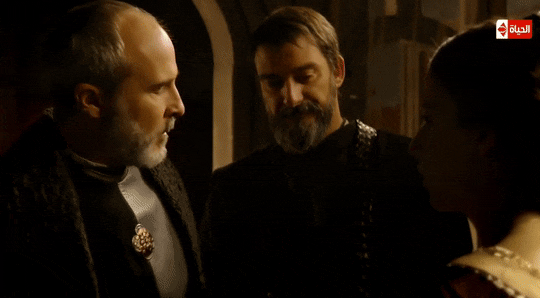
The ambassadors went to see the Princess, and to convince her she should resolve that problem. Joanna responded harshly that they should not speak to her about anything, except what her parents told them to.

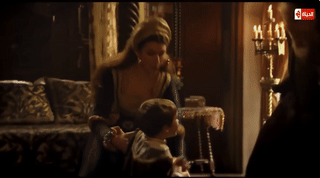
Philip ordered the children to be brought and begged Joanna sweetly to be reasonable, but it did not have any effect on her, and she insisted on having her slaves back.




Then, annoyed, Philip told her she was going to be locked away, and no Spaniard would be able to see her. She locked herself up in her rooms, refused to eat, and asked Philip to come. He, however, refused to go, despite the ambassador's pleas.

He returned at night, sick and with one of his feet hurt. Furthermore, he retired to a chamber that was situated below the one in which his wife resided. When Joanna sensed he was there, she started hitting the floor with a stick or stone, calling him. She spent the entire night doing this, saying from time to time:


‘Answer me, I want to know if you are there…’
And, at the same time, she began scratching the floorboards with a knife.

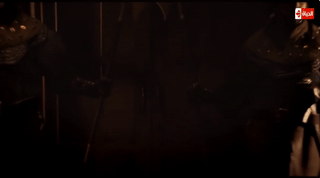
The next day, she said if they wanted her to take food, then her children and ladies should be brought to her.
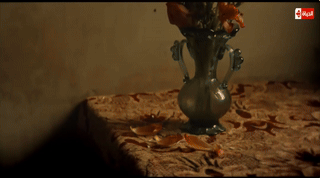

Philip became desperate, had all the doors opened for her, and said she could go wherever she wanted. He was going to Flanders, to not have to see her any more until she complied with his wishes.



Shortly afterwards, the Princess wrote him a long letter, apparently very reasonable, given that, according to Fuensalida, Philip believed he would find her obedient at his return. In the end, in the month of November, the Prince sent the slaves, and some other of Joanna’s servants, back to Spain. He believed that after separating them from Joanna, they would live in greater harmony.
Although the ambassador wrote to King Ferdinand:
‘The Prince would like to do with the Princess all that we tell him on your behalf, or even more, because we have always found him ready to please her, if she wanted, but she would rather not let him (please herself) or to do what she ought to… It is a pity to see him when he speaks of the Princess…’
The ambassador firmly believed that if God did not miraculously take Joanna’s obsession (over her husband) away, and did not give Philip a different character, it would be impossible for them to live in harmony.
With such a lack of it at home, how would they be able to rule well over so many kingdoms?
Correspondencia de Gutierre Gomez de Fuensalida, embajador en Alemania, Flandes é Inglaterra (1496-1509), el duque de Berwick y de Alba, conde de Siruela
#joanna of castile#juana i of castile#philip the handsome#irene escolar#raul merida#juana de castilla
1 note
·
View note
Text
Thread about Joanna of Castile: Part : 10 “A Storm of Jealousy: Juana and Philip's Turbulent Reunion"


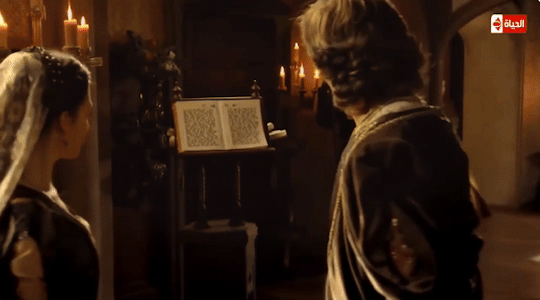
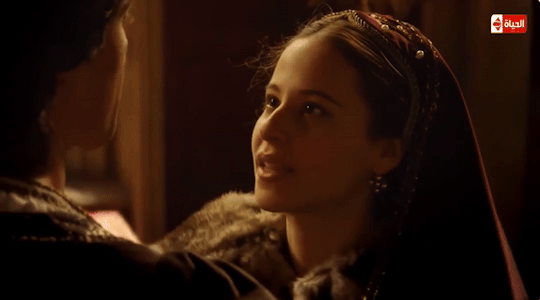
By May 1504, Juana was in Burgundy. Juana’s reunion with Philip and the children was joyful.
But soon afterwards she suspected, or discovered, an affair between Philip and a noblewoman in her entourage:
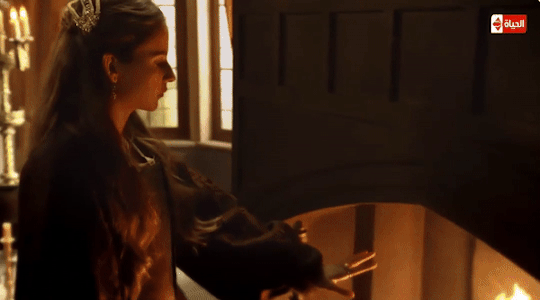



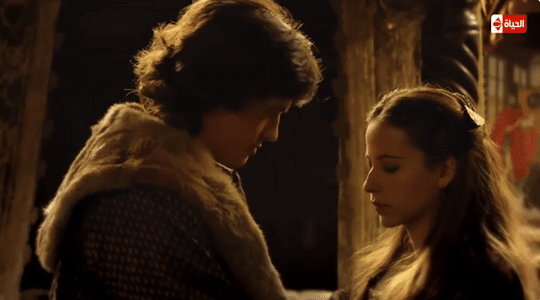

“They say,” writes Martire, “that, her heart full of rage, her face vomiting fames, her teeth clenched, she rained blows on one of her ladies, whom she suspected of being the lover, and ordered that they cut her blond hair, so pleasing to Philip …”


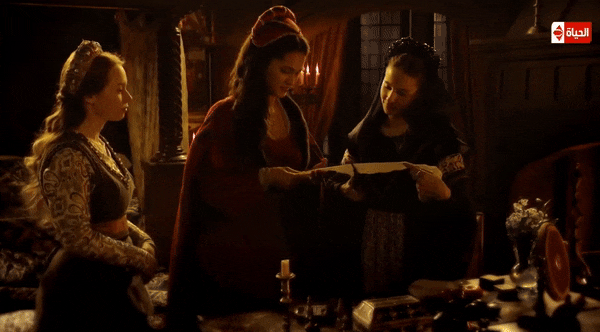
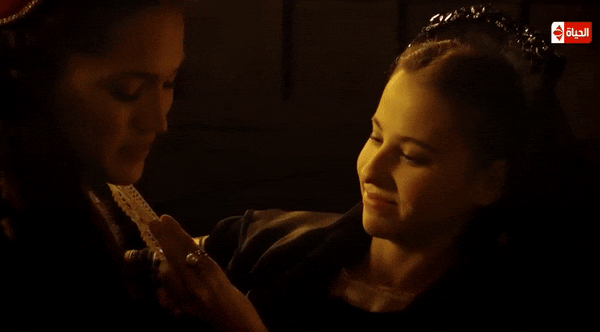


Philip’s response was equally furious. He had “thrown himself” on his wife and publicly insulted her.
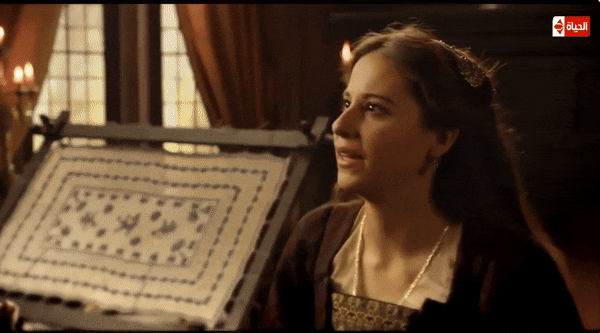



Sensitive and obstinate, “Juana is heartbroken … and unwell …”.
Isabel “suffers much, astonished by the northerner’s violence.
Maximilian’s biographer, Wiesfecker, describes Juana’s response as:
"The symptom of a pathological, passionate, if not unfounded, Haßliebe, fomenting continual strife. "
Juana would have known for years about Philip's visits to the baigneries and his more casual relationships with women. However, this affair seemed to pose a direct challenge to her standing and dignity. Juana knew her faults and had tried to limit them. In 1500, after becoming princess, she had asked Isabel to send her an honest and prudent Spanish lady who:
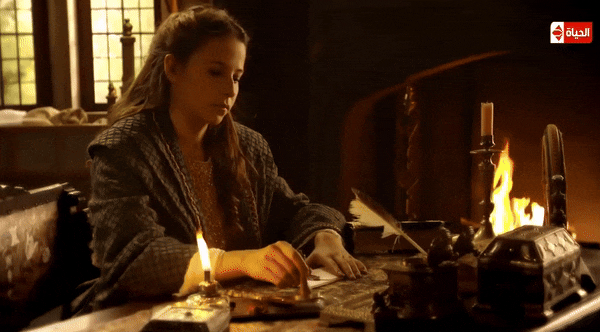



“Knows how to advise her, and where she sees something out of order (‘deshordenado’) in her conduct could say so as servant and adviser but not as an equal because, even if the advice were good, if expressed in a disrespectful way it would create more anger in she to whom it was said than it would allow for correction.”
Sources: Fleming, G. B. (2018). Juana I: Legitimacy and Conflict in Sixteenth-Century Castile (1st ed. 2018 edition). Palgrave Macmillan.
Fox, J. (2012). Sister Queens: The Noble, Tragic Lives of Katherine of Aragon and Juana, Queen of Castile. Ballantine Books.
Gómez, M. A., Juan-Navarro, S., & Zatlin, P. (2008). Juana of Castile: History and Myth of the Mad Queen. Associated University Presse.
5 notes
·
View notes
Text
Thread about Joanna of Castile: Part 8.2: “A Mother's Distress: Juana's Turbulent Departure from the Castle”
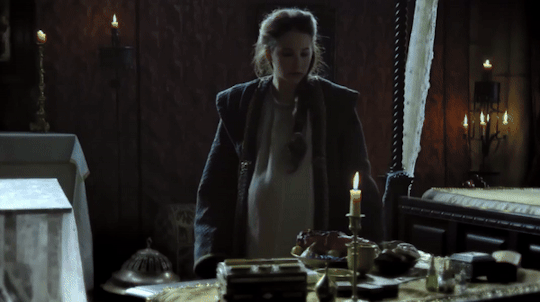



Guessing that her mother was trying every trick she could think of to
keep her, Juana abandoned pleading and talking. Instead, she staged an astonishing display of histrionic, even hysterical, behaviour, indulging in tactics she would employ for the rest of her life whenever she was thwarted or powerless. She refused to eat, to talk, or to sleep, she attempted to force a ship’s captain to prepare to sail.
On a cold November night, Juana fled, half-clad, from the castle.
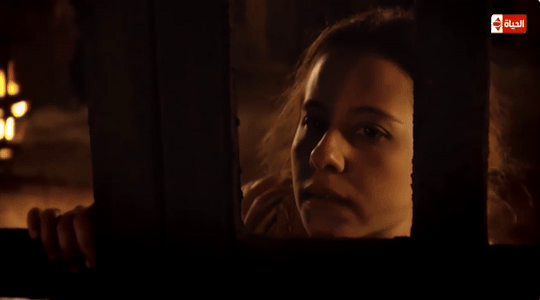


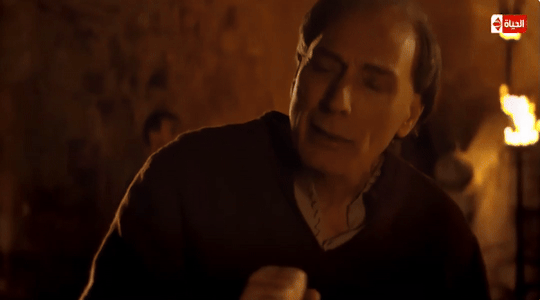


When she realised that Isabel had ordered that the gates be shut, she
“Remained in the outer precinct of the house all evening and all night and all the next day until the second hour in the humidity and night dew and without either hat or coat, during one of the coldest nights of the year so far, and not for a moment would she return to her room.”
She even threatened the bishop with death and torture for keeping her locked up.
Martire describes her prowling the outer precincts of the castle like “an African lion.”
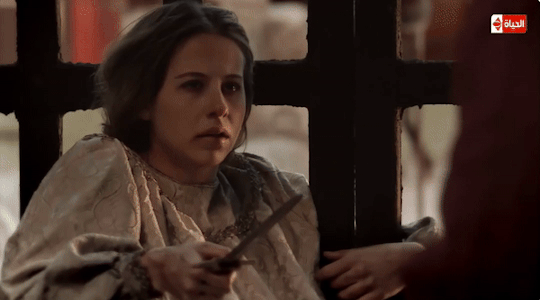

The international fair was in full swing, with the saddle and leather workers engaging in trade close to the castle walls. Concerned that Juana’s departure would cost her authority and reputation, Isabel sent a series of high-ranking emissaries, including Cisneros, in vain attempts to persuade her to return inside.

In the end, Isabel had to come in person:
“With more effort and haste, and making longer days of it than I knew was good for my health.”
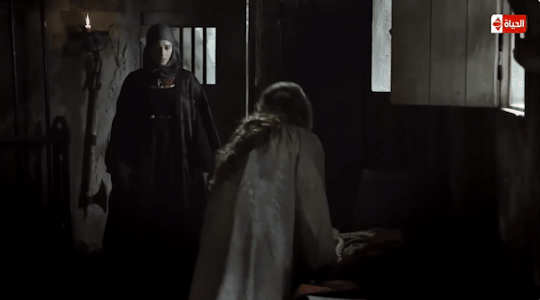
But Juana :
“Spoke to me so heatedly and with words so disrespectful and so far, beyond what a daughter should say to a mother, that had I not seen the state she was in I would not have tolerated it for a moment.”

We do not have Juana’s account. Did she, when arguing with her mother, venture into the darker territory of Isabel’s past? Might she even have referred to Isabel’s role in the descasamiento of Afonso V of Portugal and Juana (‘la Beltraneja’) of Castile when the war of the Castilian succession of 1475–1479 ended in their defeat? The heir to the throne of Castile, Enrique IV's daughter and heir, was still confined to monastic confinement in Portugal in 1503, but she would never give up her claim to the crown.
On 2 December 1503, Lope de Conchillos wrote to his uncle, Fernando's secretary, Miguel Pérez de Almazán, that Isabel was well but “very afflicted and tired” of the princess.
In March 1504, Juana was finally allowed to leave the country. In the end, her tantrums worked. The bishop of Catania, Diego Ramirez de Guzmán, was sent with her to strengthen the Spanish diplomatic presence in Brussels. Moreover, Diego Ramirez de Villaescusa, bishop of Málaga, did not accompany her.


Juana’s journey, from beginning to end, was a reversal of the first. There were no tears when she left Laredo, but Philip eagerly awaited her at Blankenburg/Blankenberge.
While Isabel wondered if she would stay as unhappy as she was while she was here, she was the talk of the Low Countries. Juana's decision to leave Castile would have big effects on her future and the kingdoms she ruled.
Sources: Fleming, G. B. (2018). Juana I: Legitimacy and Conflict in Sixteenth-Century Castile (1st ed. 2018 edition). Palgrave Macmillan.
Fox, J. (2012). Sister Queens: The Noble, Tragic Lives of Katherine of Aragon and Juana, Queen of Castile. Ballantine Books.
Gómez, M. A., Juan-Navarro, S., & Zatlin, P. (2008). Juana of Castile: History and Myth of the Mad Queen. Associated University Presse.
8 notes
·
View notes
Text
Thread about Joanna of Castile: Part 8.3: "Strained Loyalties: Juana's Personal and Political Turmoil"


Juana’s decision to abandon Castile would go on to have immense repercussions for her future and for that of her kingdoms.
Prawdin thought she had made an emotional, political, even religious rupture with “all Spain.”
For Aram too,
“It was clear that Juana was willing to use her health and compromise her status to obtain what she wanted, and that was not to reign over Castile.”
Others have seen her conduct as “a symptom of madness.”
Zurita thought the incident at La Mota
“Revealed the indisposition and dementia (demencia) of the Princess, which was not formerly public knowledge.”
Ladero Quesada too has Juana “passing the threshold of dementia: while for Suárez Fernández:
“Since that stormy night of November 1503 … her parents … had not the slightest doubt that [Juana] suffered from a mental disturbance so great that it could prevent her from assuming her functions.
She regarded her marriage vows with utmost seriousness, and had also made oaths to her future kingdoms before the altars of Toledo and Zaragoza. Her subsequent insistence on safeguarding Castilian interests, as she perceived them, would ultimately jeopardize her relationship with her husband, whom she had longingly sought to reunite with.
Sources: Fleming, G. B. (2018). Juana I: Legitimacy and Conflict in Sixteenth-Century Castile (1st ed. 2018 edition). Palgrave Macmillan.
Fox, J. (2012). Sister Queens: The Noble, Tragic Lives of Katherine of Aragon and Juana, Queen of Castile. Ballantine Books.
Gómez, M. A., Juan-Navarro, S., & Zatlin, P. (2008). Juana of Castile: History and Myth of the Mad Queen. Associated University Presse.
3 notes
·
View notes
Text
Thread about Joanna of Castile: Part 9:Juana's arrival
Intrigues and Ambitions: The Political Landscape of Philip and Juana's Court

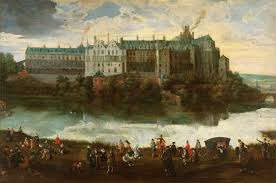
Erasmus' Epiphany speech in 1504, which he gave to Philip on the Coudenberg, was fatter than most speeches.
The princess was as chaste as Penelope; as pious as Claudia; as noble as Cornelia, mother of the Gracchi.
Yet, Erasmus had a pointed message: Spain was a temptation that Philip (and, by extension, Juana) had to resist.
Speaking in the voice of the Low Countries he declared:
“Spain crowned you, but I bore you. I admit I owe everything to you, but in return you owe yourself to me. That is a bold thing to say, but it is the truth. For I know I address my true prince, and not a tyrant.”
Jan Smeken, leading poet, or facteur, of Brussels’ chamber of rhetoric, De Lelie (Lily), feted Juana’s return in similar vein as essential to the peace, prosperity, and impregnability of the Low Countries. He compared her to the Trojan Palladium, divine image of Pallas Athene, which had put Troy beyond the reach of Greece.

But neither Erasmus nor Smeken had counted on Philip’s new favourite, Juan Manuel, lord of Belmonte de Campos, brother of the late Marina Manuel, and an ambitious and able diplomat. Manuel had helped prepare Juana’s first voyage to the Low Countries, commissioning the two Genoese carracks.
Although loyal to Isabel, he had a passionate antipathy for Fernando and was determined to whet Philip’s appetite for Castile.

Fuensalida felt sidelined:
“Don Juan … speaks in such obscure terms that I cannot understand the meaning, although I understand the words … They only speak to me in general terms; they do not call me to their meetings. I understand that these are about matters very different to those your highnesses would like to hear about, indeed, they are the contrary of them…”.
After Manuel’s arrival, Juana’s relations with the three Spanish ambassadors, whose joint despatches resound with Manuel’s voice, deteriorated sharply.
Sources: Fleming, G. B. (2018). Juana I: Legitimacy and Conflict in Sixteenth-Century Castile (1st ed. 2018 edition). Palgrave Macmillan.
Fox, J. (2012). Sister Queens: The Noble, Tragic Lives of Katherine of Aragon and Juana, Queen of Castile. Ballantine Books.
Gómez, M. A., Juan-Navarro, S., & Zatlin, P. (2008). Juana of Castile: History and Myth of the Mad Queen. Associated University Presse.
2 notes
·
View notes
Text
Musées royaux des Beaux-Arts de Belgique - Koninklijke Musea voor Schone Kunsten van België - Fine Arts Belgium

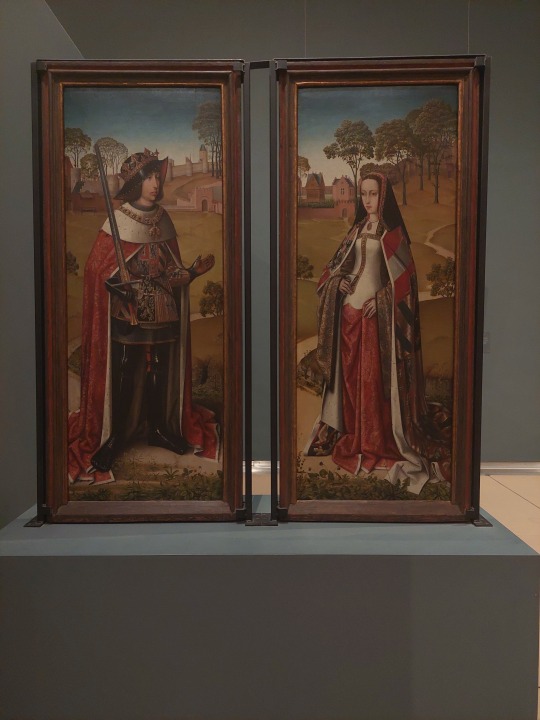
Went to the Fine Arts Museum here in Belgium just to see the portraits of Philip the Fair and Joanna of Castile.
3 notes
·
View notes
Text
Thread about Joanna of Castile: Part 7.2: Juana and Philip arrive in Spain
They reached the high pass of San Adriano, toiling through heavy snow toward Salvatierra/Agurain, where crowds of Basques surrounded them. According to the Reise author, the prince's hands went red from all the besamanos (hand-kissing).
Throughout the journey, French-language chroniclers emphasise Philip’s primacy. The Spanish kings wanted Juana to be protected. They issued instructions to various cities to make sure the princes stayed together under one roof.

At the monastery of Santa María la Real de las Huelgas, outside Burgos, where they attended mass and kissed relics, two ‘equal’ seats awaited them at the high altar.
Bernardino Fernández de Velasco, constable of Castile, greeted them a half-league from the city, whose gates were closed ritually against them until they swore to uphold its privileges. When, at nightfall, they processed to the cathedral, they did so together, under a golden pallium. A single sword, the symbol of sovereign justice, was held before Juana and another before Philip.
At Olías, north of Toledo, Philip came down with measles. This must,
nonetheless, have been one of the happiest moments of Juana’s life. Late one April afternoon, she watched from a gallery as, among an incoming party of riders, she glimpsed a familiar and “very pleasant, laughing face.”

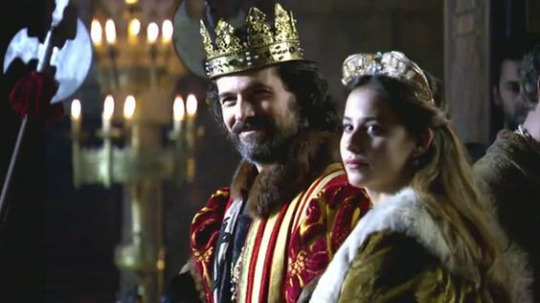
As Juana struggled to get through the crush, Fernando stepped
forward, sweeping off his headgear, and kissed her twice “for joy.”
Seizing his hand, she led him to an inner chamber where she acted as
interpreter between father and husband.
An enthusiastic Philip told his chancellor, Maigny, that Fernando had been:
“très humain et bégnin …autant ou plus que s’il feust esté mon propre père.”
During the entry into Toledo on May 7, Molinet was struck by the ritual struggles between displays of precedence and modesty and respect. Lalaing persists in emphasizing Philip's superiority. The Reise author also focuses attention on Philip and Fernando. Aram argues that Fernando collaborated to marginalize Juana and undermine the principle of female inheritance, which both sanctioned and threatened their authority in Castile.
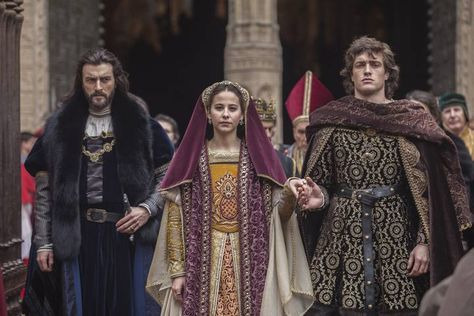
On 22 May, seated below the monarchs in the cathedral, Juana and Philip were sworn-in as the heirs to Castile, León and Granada. During the ceremony, both sacred and contractual, which opened the Cortes of Toledo in 1502, Juana received allegiance first, followed by Philip as the 'legitimate husband'.”
Juana’s pride in her status is reflected in her commissioning of six stunning tapestries, bought for her pleasure, on 10 August 1502. The “golden tapestries,” worked predominantly in gold and silver thread by Philip’s valet de chambre and tapissier, Pierre van Aelst (or Pieter van Edinghen), with whom Juana had a close working association, and dedicated to the Virgin Mary, remain among the greatest treasures of the Spanish state.
These, connected to foreign policy, seem to involve the whole question of Philip’s political independence vis-à-vis his parents-in-law and wife. In a show of spectacular defiance, Philip sent home the major architects of the Spanish marriage within his council, including its president, Henri de Berghes, and refused to accept the combined pleas of Isabel and Juana to reconsider his decision. The plague may have started to stalk the city. Several courtiers died at this time. Busleyden replaced Berghes but fell sick and, on 23 August, he too died. When the princes left for Zaragoza on 29 August, the political honeymoon was well and truly over. Philip’s
“feet itch, his blood boils … and he can settle nowhere,” writes Martire.

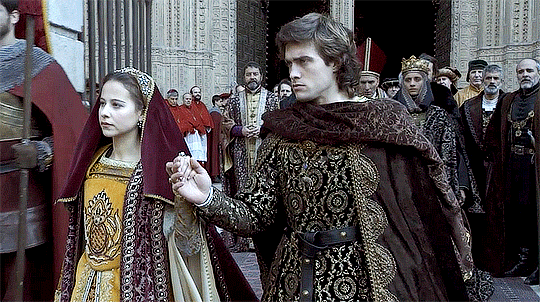

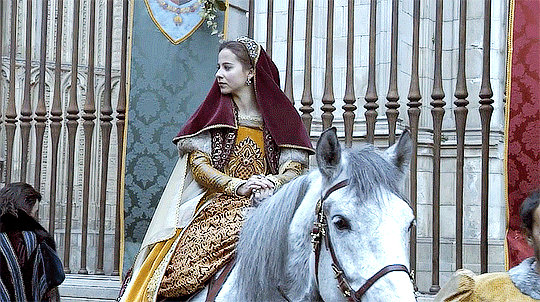
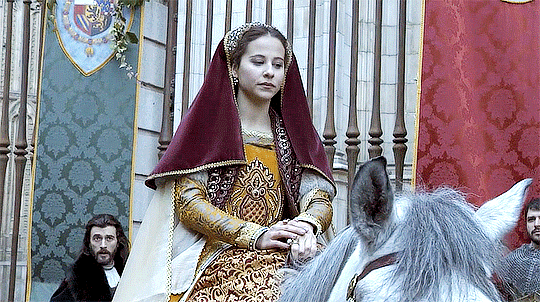




The princes entered Zaragoza on 26 October for the ceremony of oath taking before the Corts.
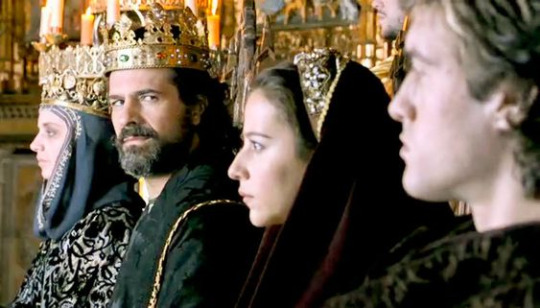
Philip was accepted as the future king, but only in Juana’s lifetime. Juana herself became the first female heir to Aragon, and, in the event, its first and last proprietary queen. Nonetheless, this was a pact conditional upon Fernando failing to produce a new son.
Despite the reservations against female rule, the large numbers attending the ceremonies in Toledo and Zaragoza suggest enthusiasm for the princes.
However, following the partition of Naples, the outbreak of fresh hostilities between Fernando and Louis, culminating in the latter expulsion from Naples, made Philip extremely anxious. Fernando rushed to Madrid, where Isabel was in poor health, before preparing for a fresh military campaign. The monarchs called Philip for talks because they knew he wanted to go home. Juana was left to preside at the Cortes for almost three weeks before she too was recalled. Later Aragonese testimony describes her then much as Fuensalida and Rodríguez de Fonseca had reported:
“very sensible (discreta), prudent (cuerda) and with excellent natural gifts.
After conducting “some affairs” she left Zaragoza on 24 November.
To be continued...
Sources: Fleming, G. B. (2018). Juana I: Legitimacy and Conflict in Sixteenth-Century Castile (1st ed. 2018 edition). Palgrave Macmillan.
Fox, J. (2012). Sister Queens: The Noble, Tragic Lives of Katherine of Aragon and Juana, Queen of Castile. Ballantine Books.
Gómez, M. A., Juan-Navarro, S., & Zatlin, P. (2008). Juana of Castile: History and Myth of the Mad Queen. Associated University Presse.
3 notes
·
View notes
Text
Thread about Joanna of Castile: Part 8: “The Tragic Departure: Philip's Refusal and Juana's Suffering







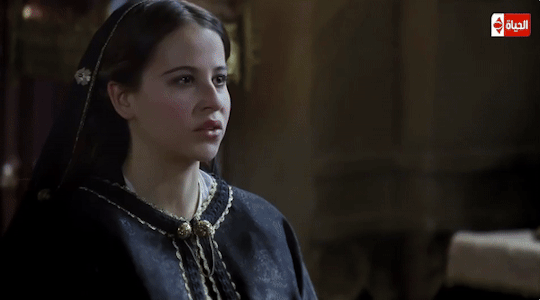





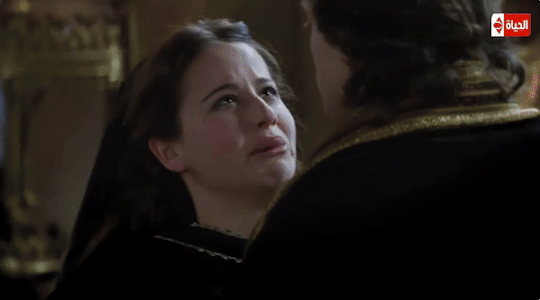






Philips' refusal to stay longer shocked both monarchs and procurators. Castilian procurators warned that if he crossed France during wartime, he would be considered a traitor, exposing himself to the mercy of his enemies and endangering Juana's life. This would not only undermine the monarchs, but also the interests and honour of all Spain, and would cause great agitation. The Aragonese procurators appealed to Philip in the same way. Although the monarchs persuaded Juana to remain for the birth of their fourth child, Philip left Madrid on 19 December.
Martire was dismissive of Juana, who showed no sign of 'royalty or courage'. Burton, perhaps familiar with Martire’s letters, later summarised the situation in his opus on melancholy.

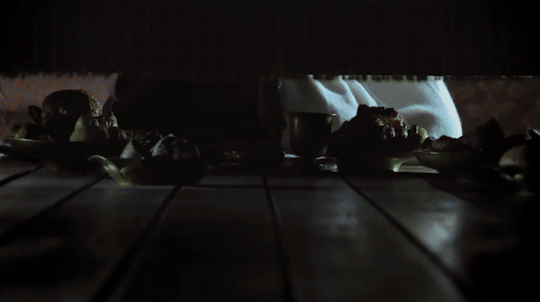
Juana was:
“So impatient and melancholy upon [Philip’s] departure, that she would scarce eat her meat, or converse with any man; and though she were with child, the season of the year terrible, the wind against her, in all haste would to sea after him.”
Historians have also attributed this distressing episode to Juana's personal obsession with Philip, underestimating the broader political aspect. As with all female royals, Juana was born into a highly political setting. Even though she wasn't power-hungry, honour and reputation mattered to her. She was not only affected by her separation from her husband, but also by his conduct towards her. As a result, Juana, who wore violet for her reunion with Isabel in May, bid Philip farewells in December.
Almost certainly, this signalled more than personal grief. She was heir to the many realms of Castile and Aragon and beyond personal grief and dishonour, her mourning signalled a political calamity.
The idea that Philip had run from his commitments as soon as the oath-taking was over made people doubt the succession, which made it very unlikely that the Spanish kingdoms could be ruled by princes who were also archdukes of Austria and dukes of Burgundy. This left Juana with a difficult decision, although not necessarily a resolute one:
To abandon her husband and children and remain in Castile to confront an uncertain future; or, in the event of Isabel's demise, to allow Fernando to continue to lead until Charles reached adulthood.
Considering the magnitude of negative remarks regarding Juana's conduct, it is noteworthy to recall that throughout the spring, she remained faithful to her royal duties. She made various acts of religious patronage, including visits that January to the Clarisan monastery of Rejas. Another sign that she supported the Franciscan order comes from a note written by a man named Francisco Segarra, who was hired by the kings to inspect monasteries in Aragon in 1493. Segarra thanks Juana for an act of charity and for her letters, in which she told him not to hesitate to ask her for more help. He hopes to be able to visit her soon.




On 10 April, she brought comfort to her parents with the birth, at Alcalá de Henares, of a second son, Ferdinand, whom she agreed to leave in Castile. Sandoval describes Juana’s pleasure at the birth and the (fattering) sermon about her that Villaescusa preached at the baptism. Zurita refers to the:
“Great respect that the princess always had for the queen.
Sources: Fleming, G. B. (2018). Juana I: Legitimacy and Conflict in Sixteenth-Century Castile (1st ed. 2018 edition). Palgrave Macmillan.
Fox, J. (2012). Sister Queens: The Noble, Tragic Lives of Katherine of Aragon and Juana, Queen of Castile. Ballantine Books.
Gómez, M. A., Juan-Navarro, S., & Zatlin, P. (2008). Juana of Castile: History and Myth of the Mad Queen. Associated University Presse.
5 notes
·
View notes
Text

Reference drawing of Juana I of Castile for the Tomb of Maximillian I by Jörg Kölderer (1522)
349 notes
·
View notes
Text
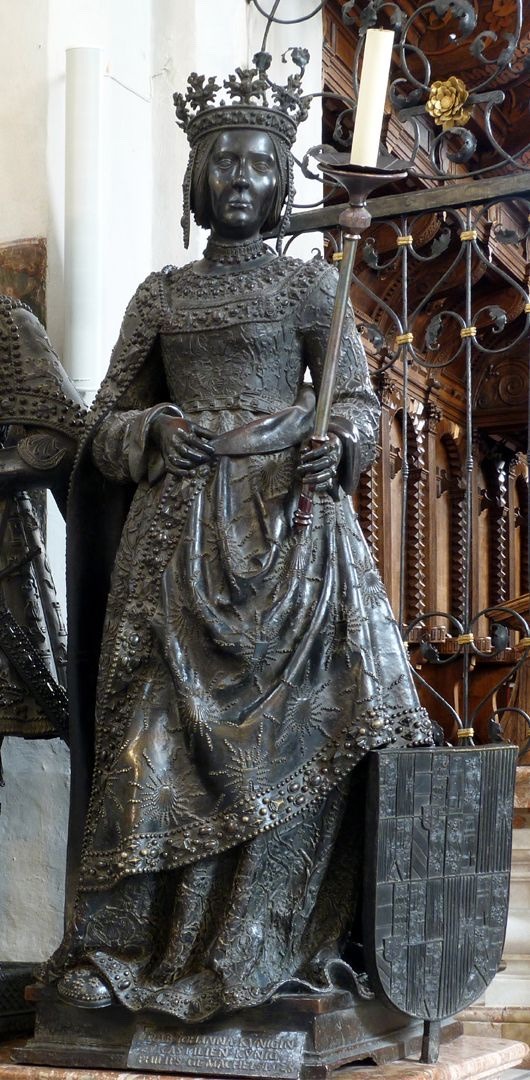

Bronze statues of Juana I of Castile and Archduchess Margaret of Austria in the Empty Tomb of Emperor Maximillian I
79 notes
·
View notes
Text

The Queen is Mad is a musical psychodrama inspired by the true story of Joanna of Castile.
Cast
Natasha Hoeberigs (Joanna)

Alan Vicary (Ferdinand)

Brian Raftery (Philip).

3 notes
·
View notes
Text

Six hundred years ago, the Dukes of Burgundy ruled Brussels. These rich and powerful monarchs and cultured patrons put together a treasure that still fascinates today: the Library of the Dukes of Burgundy, a unique and precious collection of manuscripts.
Many of these masterpieces have stood the test of time and can be admired today in the KBR museum. Yesterday, I visited the KBR in Brussels, where I was able to view not only exquisitely illuminated books, but also medieval paintings, sculptures, and jewellery.
In this portrait from ca. 1500, Philip the Fair is wearing the necklace of the Order of the Golden Fleece. The portrait is by an anonymous painter related to Pieter van Coninxloo, who had been active in Brussels since 1479. There are many portraits of the last duke of Burgundy because he himself ordered them as gifts for his relatives. Philip the Fair was married to the infante Johanna/Juana/Joana, daughter of Ferdinand of Aragon and Isabella of Castile. In this way, he embodied the bond between the Burgundian house and the Habsburgs, between a feudal state and a window on modern times, a view of a new world. As a grandson of Charles the Bold and son of Emperor Maximilian of Austria and Mary of Burgundy, fortune smiles on Philip the Fair. His future looked bright. Despite his numerous political successes, he couldn't live up to his high expectations. He was just 28 years old when he succumbed to a severe fever in Burgos.
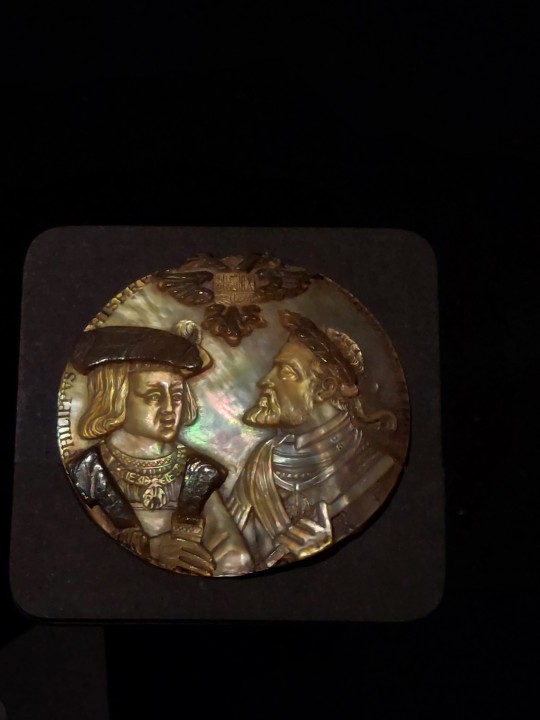
Medallions depicting Philip the Fair and Charles V (15th – 16th century)
3 notes
·
View notes
Text
Thread about Joanna of Castile: Part 6: The Princes’ Journey : Juana of Castile and Philip of Burgundy Visit the French Court, 1501
In this part of my thread, I will provide further information about Joana's first stop in France.
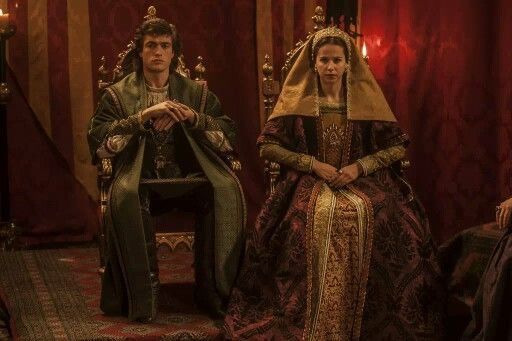
Like I previously said in my last thread, In 1501, Philip of Burgundy and Juana of Castile became the heirs of the kingdoms of Castile and Aragon. This new status required them to appear in constitutional ceremonies in the principal cities of Spain and before the ‘Cortes’ to witness the swearing of oaths to them ùas heirs.


The route they would take was the subject of controversy. Juana’s parents, Ferdinand and Isabella, were insisting they take a sea voyage from Flanders to Spain. A new Spanish envoy, Juan Rodríguez de Fonseca, bishop of Córdoba, reported that:
Juana seemed eager to serve her parents and was widely thought to be “very sensible (cuerda) and very level-headed (asentada).
Philip’s advisors stipulated an overland route through France. The matter was settled in August 1501 when Philip agreed to marry his son Charles to Claude, the eldest daughter of King Louis XII of France and his queen, Anne of Brittany. Philip expressed an interest in meeting his prospective daughter-in-law, and when King Louis heard this, he invited Philip and Juana to visit the French royal court at Blois on their way to Spain.
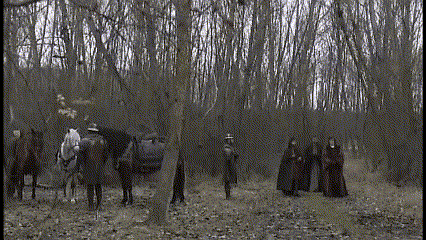
The children were placed with Margaret of York and Anne of Burgundy in Mechelen, and Philip signed new household ordinances for the journey.
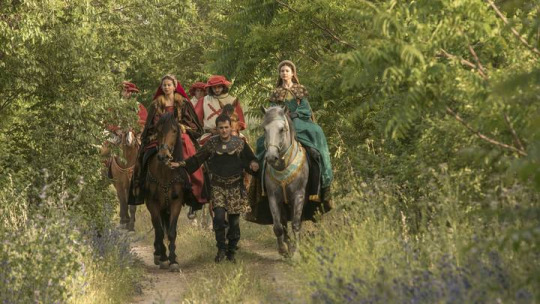
There are several vivid accounts of the journey. The princes left Brussels on 4 November 1501, travelling until Mons with Margaret of York and down through France to Blois. Philip delighted in detours, but Juana, more aloof and withdrawn, preferred the straighter route.
Queen Anne sent Madame de Vendôme along with fourteen women to wait on Juana while she travelled from one town to the next. Juana made an official entry into Valenciennes on November 9 where she was given two silver pots and a bowl covered with flowers of gold by the inhabitants.

Philip and Juana made their official entry into France on November 16 where they were met with immense receptions. They arrived in Paris where a grand banquet was given for the couple that included engaging maidens, drink, spices, sweets, and dancing. Juana left after one night to make her way to the castle of Blois. Philip stayed in Paris four more days before joining her.

They arrived at Blois together on December 7, where they were housed in a newly built section of the palace which had been richly tapestried and furnished just for their visit. Philip went to meet King Louis with his retinue, accompanied by Pierre de Beaujeu, the Duke of Bourbon. He entered the king’s presence and bent down on his knee three times as he neared. Louis rose and doffed his cap at each bow, advancing and embracing Philip. The heir to the French throne, Francois d’Angouleme was seven years old, and he came forward to receive a kiss from Philip. It was Francois’ first appearance at a grand court occasion.
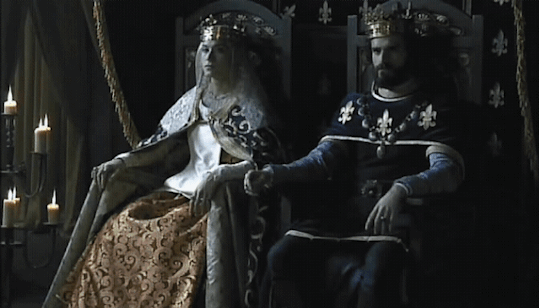

Juana was particularly intent on maintaining her status as the heir to the Spanish throne without offending her hosts. She was asked if she would kiss the King of France and would only agree after consulting her minister, the Bishop of Córdoba. The Bishop agreed a kiss was acceptable. Louis had insisted that Philip bow three times to him, but when Juana arrived, he rushed over to her, preventing her from curtseying twice.

The good-natured Louis then released her, courteously asking her to go to his wife, so the men could be alone together. Juana began making her way to the door where the Duchess of Bourbon was waiting for her to arrange her dress and take her to the Queen, but there was a crush of people preventing her from reaching the door. Then Philip came and pressed his way ahead of his wife, making the crowd even bigger and more raucous, causing further delay.
The rest of the journey will be posted in the next thread: Part 6.1.
5 notes
·
View notes
Text
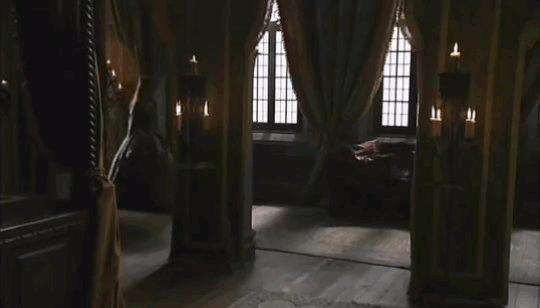
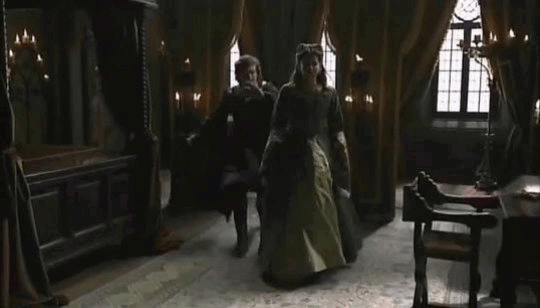

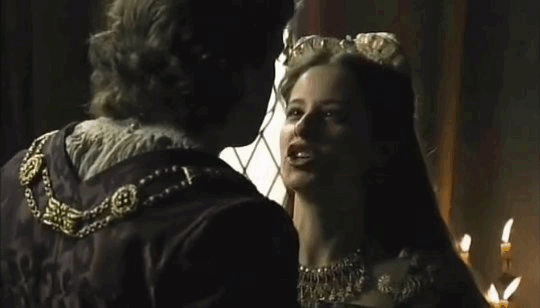

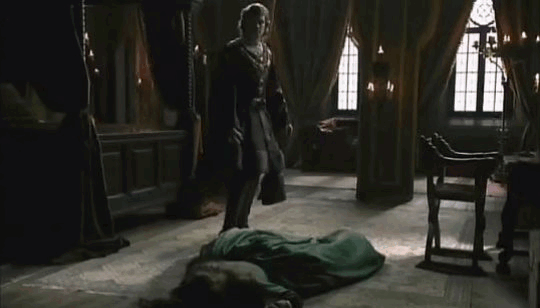

Juana y Felipe
How can you disrespect me like that?
12 notes
·
View notes
